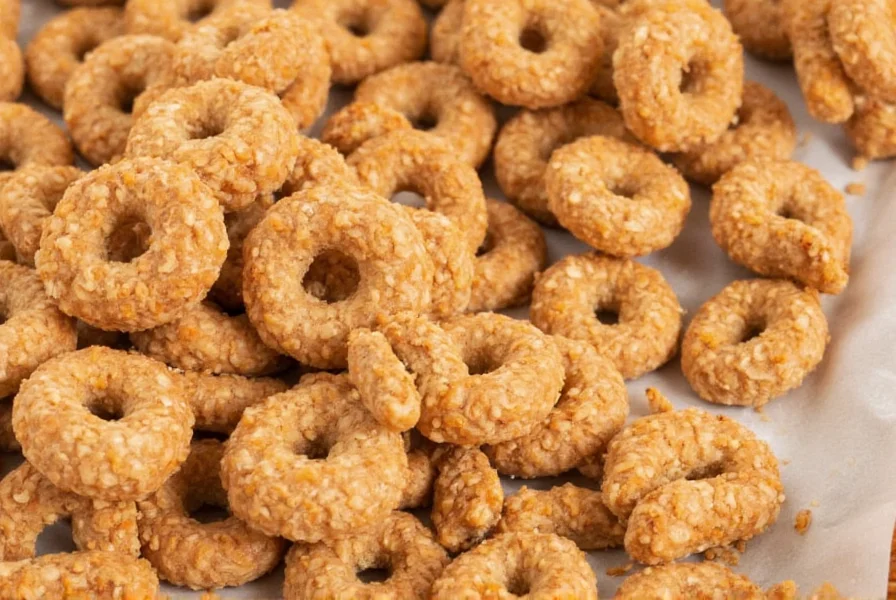Apple Jacks, the colorful fruit-flavored cereal introduced by Kellogg's in 1965, has undergone several marketing transformations throughout its history. Among the most notable changes was the evolution of its mascot characters, particularly the phasing out of the Cinnamon Guy character that appeared alongside the main Apple Jack figure during the cereal's early years.
The Origins of Apple Jacks Characters
When Apple Jacks first hit store shelves in 1965, Kellogg's created a distinctive marketing approach featuring two primary characters: Apple Jack, a cheerful cowboy character, and Cinnamon, often referred to as the Cinnamon Guy. These characters appeared together in commercials and on packaging, with Apple Jack representing the apple flavor component and Cinnamon representing the cinnamon flavor.
The original Apple Jacks advertising portrayed the two characters as partners in a Wild West setting, with Cinnamon typically depicted wearing traditional Native American-inspired clothing and headdress. This representation reflected common advertising tropes of the era but would later become problematic as cultural sensitivity standards evolved.
Understanding the Cinnamon Guy Character
The Cinnamon Guy character served as the cinnamon counterpart to Apple Jack's apple representation. In early commercials, the characters would often interact in frontier-themed scenarios, with Cinnamon providing the "cinnamon kick" that differentiated Apple Jacks from other fruit-flavored cereals.
Historical cereal advertisements show Cinnamon with distinctive features including:
- Traditional Native American-inspired clothing and accessories
- A feathered headdress
- Distinctive facial features reflecting stereotypical representations of the era
- Speech patterns that incorporated stereotypical "Native American" mannerisms
These representations were common in 1960s advertising but would later be recognized as culturally insensitive and inappropriate.
Evolution of Apple Jacks Marketing
By the early 1970s, Kellogg's began modifying its Apple Jacks marketing approach. The company gradually phased out the Cinnamon Guy character as awareness grew about the problematic nature of stereotypical Native American representations in media and advertising.
| Era | Mascot Configuration | Marketing Approach |
|---|---|---|
| 1965-early 1970s | Apple Jack and Cinnamon Guy | Wild West partnership theme |
| Mid-1970s-1990s | Apple Jack solo | More modern, energetic presentations |
| 2000s-present | Apple Jack with updated design | Digital animation, focus on "crunch" and flavor |
The transition away from the Cinnamon Guy character represented an important shift in how food companies approached cultural representation. Rather than continuing with potentially offensive imagery, Kellogg's chose to focus solely on the Apple Jack character, who underwent several visual updates while maintaining his core identity as a friendly cowboy figure.
Cultural Context of Cereal Mascot Evolution
The story of the Cinnamon Guy's disappearance from Apple Jacks marketing reflects broader changes in advertising ethics. During the 1960s and early 1970s, many companies used stereotypical representations of various ethnic groups without considering the implications. As societal awareness grew, companies began reevaluating these marketing approaches.
Other notable examples of mascot evolution include:
- Quaker Oats' Aunt Jemima (discontinued in 2021)
- Land O'Lakes' Native American imagery (removed in 2020)
- Cream of Wheat's Rastus character (phased out in the 1950s-60s)
These changes demonstrate how advertising practices have evolved to become more culturally sensitive and inclusive over time.
Current Apple Jacks Brand Identity
Today's Apple Jacks marketing focuses exclusively on the Apple Jack character, who has undergone several visual updates while maintaining his core identity. The modern Apple Jack features brighter colors, more dynamic animation, and emphasizes the cereal's taste and crunch rather than historical themes.
Understanding the history of the Cinnamon Guy provides valuable context for appreciating how food marketing has evolved to be more culturally aware. The complete transition away from the Cinnamon Guy character by the mid-1970s represents an early example of a major food company responding to changing cultural norms regarding representation.
Frequently Asked Questions
Why did Kellogg's remove the Cinnamon Guy from Apple Jacks advertising?
Kellogg's phased out the Cinnamon Guy character in the early 1970s due to growing awareness about cultural sensitivity. The character's portrayal of Native American imagery and stereotypes was increasingly recognized as inappropriate and offensive, prompting the company to discontinue this representation in favor of focusing solely on the Apple Jack character.
When did the Cinnamon Guy first appear in Apple Jacks commercials?
The Cinnamon Guy character debuted alongside Apple Jack when the cereal was first introduced in 1965. Both characters appeared together in the original marketing campaign that established Apple Jacks as a colorful, fruit-flavored cereal with "apple and cinnamon flavor."
Is the Cinnamon Guy character still used in any Apple Jacks products today?
No, the Cinnamon Guy character has not been used in official Apple Jacks marketing since the early 1970s. Kellogg's completely phased out the character due to concerns about cultural representation, and current Apple Jacks packaging and advertising features only the Apple Jack character in various updated designs.
What was the relationship between Apple Jack and Cinnamon Guy in the original commercials?
In the original 1960s commercials, Apple Jack and Cinnamon Guy were portrayed as partners in a Wild West setting. Apple Jack represented the apple flavor while Cinnamon Guy represented the cinnamon flavor. They would interact in frontier-themed scenarios, with Cinnamon often providing the "cinnamon kick" that differentiated Apple Jacks from other cereals.
How can I find vintage Apple Jacks packaging featuring the Cinnamon Guy?
Vintage Apple Jacks packaging featuring the Cinnamon Guy character can sometimes be found through online auction sites, vintage advertising collectors, or cereal memorabilia specialty stores. Original boxes from the 1960s to early 1970s are particularly rare and valuable to collectors of food marketing history.











 浙公网安备
33010002000092号
浙公网安备
33010002000092号 浙B2-20120091-4
浙B2-20120091-4